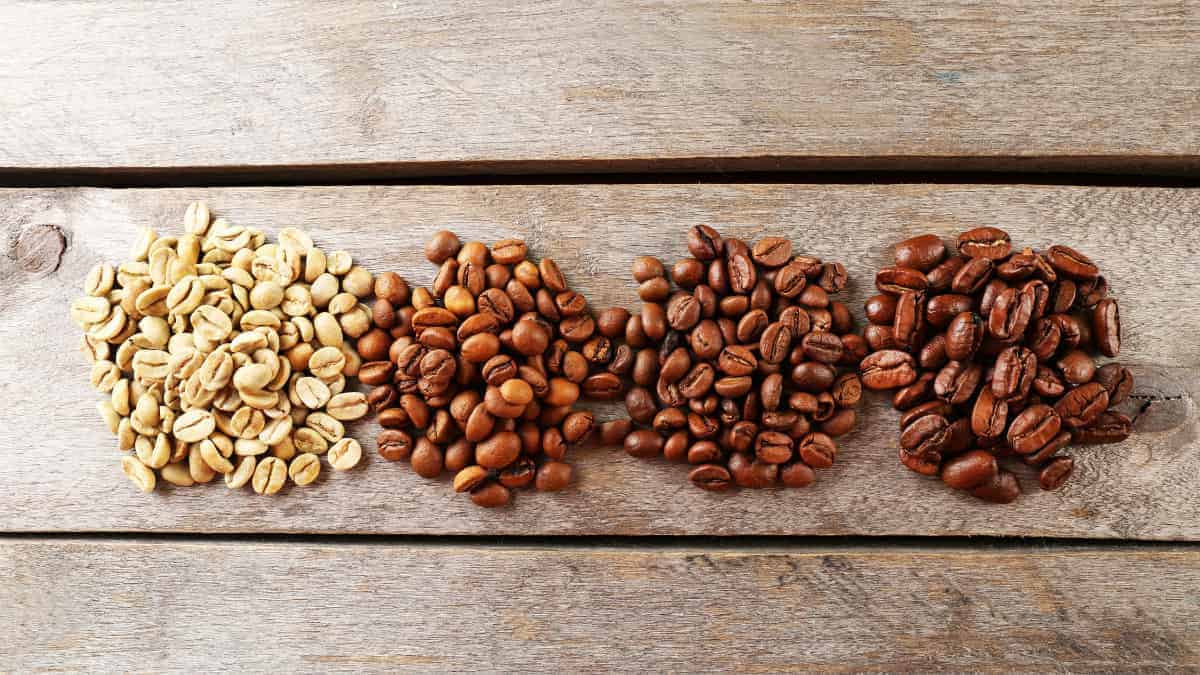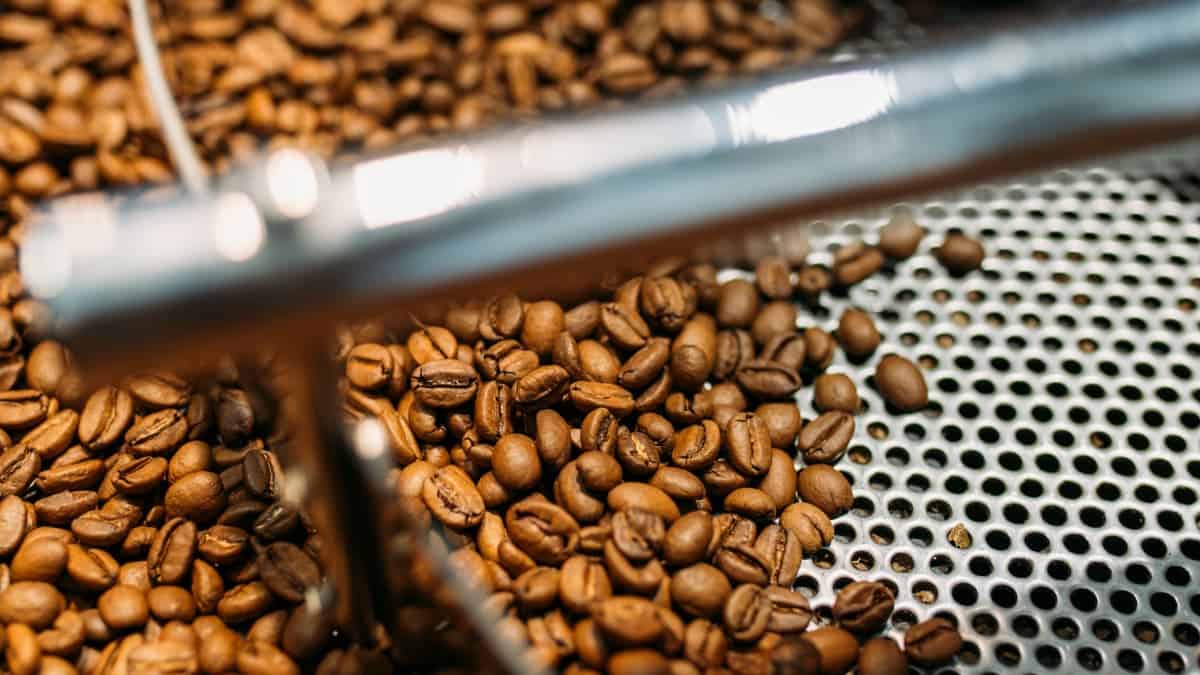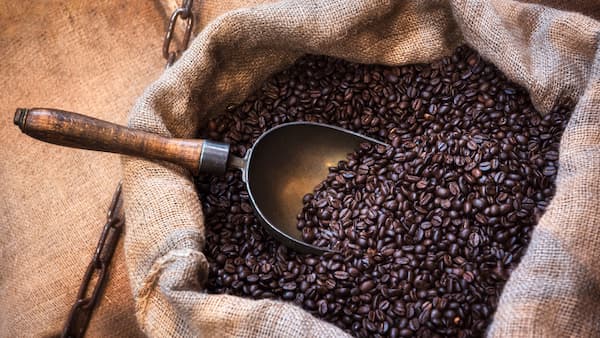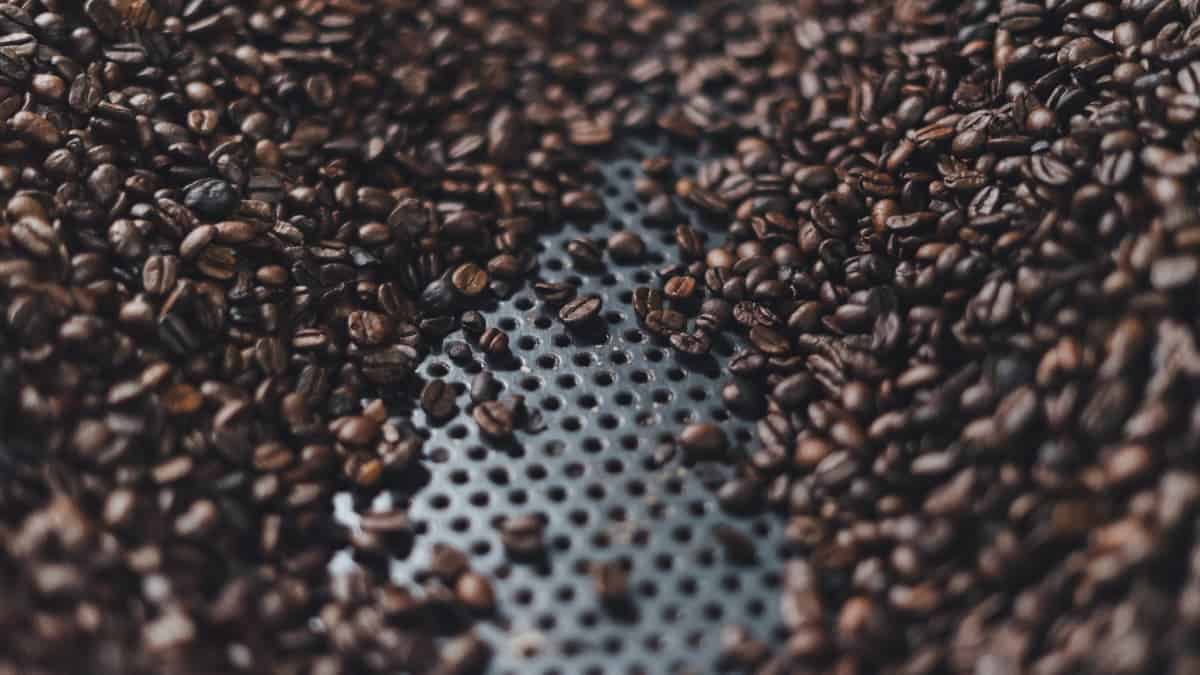The 4 Types of Coffee Roasts
During my time as a barista, I realized that even coffee lovers find coffee roasts confusing.
Which roast has the most caffeine? How do I know what roast to order for espresso? What the heck is a blonde roast?
If you’re asking yourself these questions, check out my guide to the four types of coffee roasts. I’ll explain the technique and taste behind the beans.

The 4 Main Types of Coffee Roasts
There are four main types of coffee roasts: light, medium, medium-dark, and dark roast. Each roast has a different aroma, acidity, body, and flavor profile.
Light Coffee Roasts
Light coffee roasts are coffee beans that have been roasted for the least amount of time. Roasters classify these coffee beans as “light” because of their color. As the coffee bean roasts, it darkens in the heat.
Light roast coffee beans are typically roasted until just after the first crack. At this point, they reach an internal temperature somewhere between 350 F and 400 F.
Although hot, these temperatures are not high enough to force out oils trapped in the beans. As a result, lightly roasted beans tend to look matte rather than glossy.
Light roasts usually feature bright acidity and a thin body. Common flavor profiles include citrus varieties and florals.
The longer the roasting process, the more exterior flavors interact with the bean. So it is often easiest to recognize origin flavors in light roasts.
If you want to increase caffeine intake per cup, switch to a light roast. Coffee beans lose caffeine content during the roasting process. Out of the four roast types, light roasts contain the most caffeine.
Medium Coffee Roasts
Creating medium roast coffee takes a little bit of finesse. Roasters roast the coffee beans until after the first crack. They remove the beans right before the second crack.
The coffee beans reach an internal temperature between 410 F and 428 F.
Higher internal temperatures release natural oils trapped in the beans. So if you look at medium roasted beans, you can notice a slight glossiness.

The roasting process influences the flavors of medium roasts more than lighter roasts. These flavors are generally well-balanced with moderate acidity.
The flavor profile of a medium roast can vary dramatically from roaster to roaster.
Skilled roasters use the roasting process to highlight and augment the natural flavors. You can still taste origin notes; they just won’t be as pure as in lighter roasts.
Medium-Dark Coffee Roasts
Roasting coffee beans to the second crack gives you a medium-dark roast. Medium-dark beans typically reach an internal temperature between 435 F and 450 F.
At these high temperatures, a lot of the internal oils will rise to the surface.
Medium-dark roasts have heavier bodies, lower acidity, and rich, full flavors. You’ll start getting warmer notes like nuts, spices, and chocolate.
Medium-dark roasts do retain some of the bean’s natural flavors. But the roasting process will begin to obscure these original characteristics.
Despite the bold flavors, these coffee beans will have less caffeine content.

Dark Coffee Roasts
Dark roast coffee beans are roasted for a few minutes after the first crack. The coffee beans typically reach an internal temperature between 464 F and 482 F.
These roasts can be trickier to get right. Beyond the second crack, you don’t have an easy way to time the roast. Instead, roasters must rely on color, aroma, or internal temperature.
Roasting coffee beans this long obscures the natural coffee bean flavors. So roasters sometimes use dark roasts to hide unpleasant flavors. Particularly in low-quality or stale beans.

This tactic has led to a somewhat negative opinion of the dark roast in some coffee circles.
But I’m here to defend high-quality dark roast beans. Higher internal temperatures activate the sugars inside the beans.
A good dark roast coffee will be bold yet smooth, with a heavier body and minimal acidity. You’ll taste sweeter notes like brown sugar, caramel, red fruits, and darker spices.
Remember, flavor becomes bolder and more intense as the coffee beans roast. But caffeine content decreases.
Other Coffee Roasts
Several different roasts fit into these broader categories. To confuse matters, roasters describe many of these by various colloquial terms. Let’s look at common types of coffee roasts you’ll find on grocery store shelves.
Cinnamon Roast
Cinnamon roasts are so named because the beans are roasted to the color of cinnamon!
These beans just barely experience the first round of cracking. Essentially, roasters remove the beans as soon as coffee becomes drinkable.
Cinnamon is the lightest of the light roasts. The beans will reach internal temperatures of around 350 F.
Even if you appreciate a light roast, you might find a cinnamon roast too light. Cinnamon roasts are acidic and light bodied. They lack the caramelized flavors you might associate with your morning cup.
Blonde Roast
The blonde roast is another light roast. Slightly darker than cinnamon roasts, blonde roasts heat to the first crack. Internal temperatures range between 350 F and 375 F.
High in caffeine, blonde roasts are acidic and punchy. They retain much of the original coffee bean flavor.
Starbucks popularized blonde roasts. But some experts say that the chain’s blonde roast is actually closer to a city roast.

City Roast
City roasts are medium roast beans, with temperatures between 415 F and 425 F.
These roasts taste more complex, with warmer flavors beginning to show up. It’s closer to the taste traditionally associated with coffee.
City roasts offer great balance. Yes, you get the caramelization of a longer roasting process. But you can still appreciate the inherent flavors of the beans.
Breakfast Roast
Breakfast roasts are a blend of coffees from different origins. Usually, they feature a combination of light and medium roasts, but it’s up to the roaster.
Different combination possibilities mean that the flavor profile of breakfast blends varies.
Whatever the interpretation, breakfast blends are smooth and easy to drink. Unsurprisingly, they appeal to the vast majority of coffee drinkers.
Espresso Roast
Espresso roast is where we begin to enter the world of dark roast coffee beans. Essentially, roasters attempt to draw out darker, sweeter flavors while preserving original notes.
The result is a dark-but-not-too-dark coffee that’s bold but not too bitter.
Viennese Roast
Also called Vienna roast, Viennese roasts move further down the dark roas spectrum. Internal temperatures reach about 445 F. On the outside, these beans feature a reddish-brown color and oily finish.
Viennese roasts are dark and bold, with a heavy mouthfeel. They often exhibit caramel sugar and chocolate undertones. I would argue that the Viennese roast is the most drinkable of the darker types of coffee roasts.
French Roast
Roast a little longer for a French roast. These beans reach an internal temperature between 465 F and 470 F.
French roasts are smokey, bold, and bittersweet. They’re quite oily and very dark brown. You’ll taste less of the original flavors if any at all.
Italian Roast
This roast is about as dark as you can go. Purplish black and intensely oily, Italian roasts go beyond the second crack.
You’ll get burned caramel flavors, a dash of sweetness, a smattering of spices, and a smoky acidity. Of all the types of coffee roasts, Italian roasts have the most noticeable burnt taste.
Wrapping Up: Coffee Roast Profiles
There are four main types of coffee roasts and many subtypes.
- Light roasts feature greater acidity and a lighter body, showcasing the origin flavors.
- Medium roasts are well-balanced, with origin flavors augmented by roasted sweetness. The medium-dark roast moves further into that sweetness, with more spice and heaviness.
- Dark roasts are bold, with caramel, red fruit, nuts, and other undertones.
Remember: roast level will impact flavor, mouthfeel, and caffeine content.

